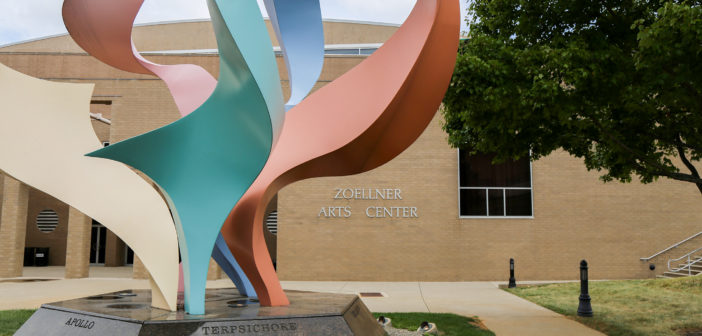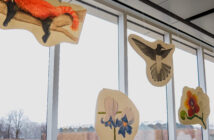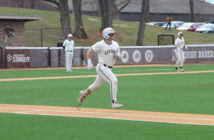In 1997, former Lehigh President Peter Likins addressed a crowd of more than 200 people with a tear in his eye, stating that the grand opening ceremony of Zoellner Arts Center capped all of the celebrations he had been a part of since he came to Lehigh 15 years prior.
“The beauty of this campus, which is further enhanced by this magnificent building, is a reflection of the dedication of the faculty and students,” Likins said to the crowd.
Since then, the center has come to serve as the home of the Music Department, Department of Theatre, the Presenting Series and Art Galleries. This year, it celebrates 25 years on Lehigh’s campus.
As part of the anniversary season, the center will be honoring some of its founders and the university leaders who embraced the vision to bring arts to the community.
Zoellner kicked off its anniversary celebrations on Oct. 1 with a performance from the New York Philharmonic to honor the Ulrich Family. It will celebrate the Baker family’s contribution with Michael Feinstein’s performance on Nov. 5, the Diamond family with Scott Bradlee’s Postmodern Jukebox on Dec. 17 and the Fowler family with a performance of “The Lightning Thief” by the Mustard & Cheese Drama Society in March.
On April 15, Zoellner’s Gala returns to honor the Zoellner family legacy with The Philadelphia Orchestra, featuring Brian Stokes Mitchell, and an outdoor performance by vertical dance company Bandaloop.
The arts center, designed by Dagit-Saylor Architects, houses three theaters: Baker Hall, a 1,002-seat proscenium theater; Diamond Theater, a 307-seat thrust theater; and a 125-seat Black Box theater. It also has a two-story art gallery, a recording studio, dance studio, costume shop, practice rooms, classrooms, a box office and a music library.
“There’s not a lot of programs in the country that are exclusively undergraduate that have this beautifully ample facility for its undergraduate students of music and theater,” said Augustine Ripa, interim chair of the Department of Theatre. “You come to Lehigh, you can do music, you can do theater and you can do it at a pretty high level. The walls are low, the access is high and I think it was very smart of Lehigh to have committed to this.”
Prior to the construction of the arts center, Ripa said the arts at Lehigh did not have as much support or access to resources. When Ripa joined Lehigh, there was no department of theater — instead, it was a division within the English department.
Ripa said students and faculty worked out of a black box theater in what is now the Wilbur Powerhouse and a studio theater in what is now Coppee Hall. He said, oftentimes, they would use the stage at Broughal Middle School for their productions.
Travis LaBerge, ‘98, said the department of music was housed in Lamberton Hall, where all of the classes and most performances were held.
Ripa said despite the need for a better performing space and support from Likins, the Board of Trustees and the Office of Development and Alumni Relations were not initially on board with the construction of Zoellner because they were doubtful there was enough alumni and community support for the project.
“The development office was curious if they could raise money from Lehigh donors for an arts center,” Ripa said. “Our visionary president had to convince them that they could, and they were convinced and they did it.”
Students and Likins proved the support from the community and alumni, and on April 7, 1995, ground was broken on the plot of land dedicated to Zoellner Arts Center.
After over two years of construction, Zoellner opened its doors for the first time in September of 1997 with a Gala Weekend of festivities. The top events included James Earl Jones performing an excerpt from a play to christen the Diamond Theater and the New York Philharmonic, directed by Kurt Masur, giving renditions of Brahms’ Second and Third Symphonies in Baker Hall.
“There was just a great energy — it felt like anything was possible,” said LaBerge, who was there when the center opened. “It was a blank slate. It was more than anyone had ever dreamt of.”
Zoellner went on to hold performances including Natalie Cole, Yo-Yo Ma, Tony Bennett, Kristen Chenoweth, Patti LaBelle, The Illusionists and performances by Lehigh students in the choral arts, orchestra, philharmonic and other groups.
Ripa said students interested in different majors across the five colleges are drawn to the inclusivity of Lehigh’s art programs because most universities require students to be a part of the music or theater departments to be involved in classes and performances.
Juliana Kilgore, ‘24, president of the Mustard & Cheese Society, said she chose to come to Lehigh because of the flexibility she could have as a double major in theater and environmental science.
“I appreciated coming to Lehigh that for a school this size they specifically have an arts center — a hub for all of performing arts,” Kilgore said. “I really appreciate that Lehigh values the arts in the same way that they value other fields.”
Wilson said Zoellner’s goals moving forward are to continue serving as a bridge between Lehigh and the Bethlehem community.
He said one way they plan to do this is by bringing free public programs into the community so students can work together with community members. His goal is for members of the community to come to Lehigh and feel comfortable enjoying the arts alongside students.
“The one thing (students and community members) can do together is the arts,” Wilson said. “People from diverse cultural backgrounds to be together in one space, that’s what we want.”
Wilson also expressed the importance of having more students come to the events and performances at Zoellner, especially since tickets are free for Lehigh students.
Katherine Perry, ‘10, said students may not realize how special the space at Zoellner is for exploring new opportunities.
Although Wilson said the majority of Zoellner’s audience comes from the local community, Zoellner staff is hopeful student attendance will increase as the center continues to serve as a home for the arts at Lehigh.
“It’s really important for people to have a space where they feel comfortable, feel seen and feel supported, and I feel like Zoellner was it for me,” Perry said. “I was probably in every space in that building at some point.”






Comment policy
Comments posted to The Brown and White website are reviewed by a moderator before being approved. Incendiary speech or harassing language, including comments targeted at individuals, may be deemed unacceptable and not published. Spam and other soliciting will also be declined.
The Brown and White also reserves the right to not publish entirely anonymous comments.